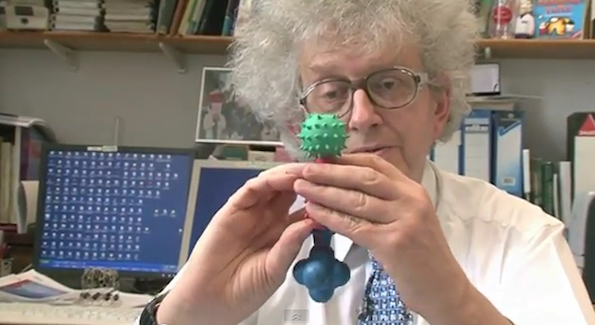There’s something you probably never thought you’d hear. Have you ever imagined having a uranium hard drive with the capacity of a petabyte? That’s one thousand terabytes.
Admittedly, my chemistry knowledge is abysmal at the moment so I’ll let these guys do most of the theoretical explanation. It’s quite fascinating actually, once you look past the unusual substance names and notations. (Kudos to you if you don’t find them weird.)
Does anyone else find that second researcher remind them of one of the friendly “mad scientists” that came into schools for those cool science experiments?

Anyway, to paraphrase: hard drives consist of tiny little magnets, which store our data. As these magnets get smaller, more data can be stored in the drive (because more magnets can be stored). These two scientists have figured out a way to shrink the magnets to a molecular level, which means increasing the capacity of the hard drive by hundreds or even a thousand-fold. This means that a petabyte hard drive is not impossible.
Of course, it’s quite improbable that these hard drives will come into play anytime soon. First things first, would you want depleted uranium in your computer? Secondly, many of these magnets can’t function in temperature above two degrees above absolute zero, meaning it probably won’t have that much real-world use, unless we really start using something intensely cold to cool the computer.
Nonetheless, it’s still remarkable to see this stuff happening. For one thing, I can’t even fathom the size of 1,000 terabytes. I’m using 500GB right now, and I’ve got plenty of space to spare. Of course, as screen resolutions increase and movie quality improves, the size of videos will likely increase proportionally and those petabyte hard drives would come in handy.
If you liked this post, check out the Steampunk Hard Drive Case or the Mimobot DC Comics Flash Drives.
Via: HardOCP










